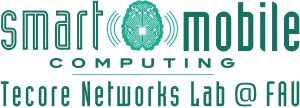STEM
We offer a week-long program called C³ – Car to Car Communication for middle school students as part of the FAU summer STEM program.
The objective of this class is to introduce middle school students to basic engineering concepts on cutting-edge wireless sensor networks technology with emphasis on vehicular networks. The students learn about wireless vehicular communication and participate in creating a basic real-world application which they implement in a small prototype vehicle. The hands-on learning allows students to define a problem, design and create a plan of action, execute the plan, and test their prototype. The goal of this class is to spark their desire to learn more, create a life-long passion for computer engineering, and to become the next-generation leaders in this field.
The program is designed to promote successful completion of the tasks provided to each student. The first few sessions cover the theoretical part of the subject material while the students are working on their car kits. Multiple hand-outs are provided where the students filled in their answers based on the subject material. They also participate in discussion groups allowing creative student contribution. Manipulatives such as video presentations, illustrations, and such are used. The sessions cover hands-on implementation of the wireless vehicle communication application where students in groups of 2 work as team to build a car that is controlled by a programmable microprocessor and uses the wireless XBee radio chip to communicate with another vehicle. The application requires an on-coming emergency vehicle to send a message to another vehicle ahead of it so that the vehicle can change lanes and clear the path for the emergency vehicle. The students programmed the microcontroller chip and XBee radio chip, assembled the circuit on a breadboard, learned how solder, design a pcb board, and used new wave 3D technology to design and create 3D models of a license plate (which was printed using a 3D printer) to create a working VANET*-enabled prototype car that is able to send/receive radio signals, and move out of the path of the emergency vehicle.
*Vehicular Ad hoc NETwork

|

|

|

|
Click on the icons to view slideshows
